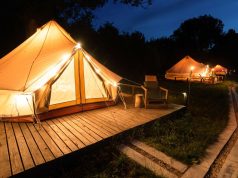The dream is a potent one: swapping the sterile grey of a cubicle for the vibrant green of a rice paddy, replacing the morning commute with a stroll to a beachfront café, and trading in water cooler chatter for connections with fellow travelers from around the globe. This isn’t a far-fetched fantasy; it’s the daily reality for thousands of digital nomads who have chosen Southeast Asia as their office. But how does one make the leap from daydreaming to doing? How do you navigate the complexities of visas, budgets, and logistics to build a sustainable life of work and travel in this incredible region?
Consider this your comprehensive roadmap. We’re going beyond the glossy Instagram posts to give you the practical, actionable advice you need to not just survive, but thrive as a digital nomad in Southeast Asia. We’ll cover the iconic hotspots and rising stars, demystify the visa puzzle, break down real-world budgets, and share the essential tips for staying productive and connected. Your adventure starts here.
Why Southeast Asia? The Irresistible Allure

What makes this corner of the world the undisputed mecca for remote workers? It’s a powerful alchemy of factors that few other regions can match.
- Unbeatable Affordability: This is perhaps the biggest draw. Your hard-earned currency stretches significantly further here. A comfortable lifestyle, including a modern apartment, delicious food, co-working space membership, and weekend excursions, can be achieved for a fraction of the cost of living in North America, Europe, or Australia.
- Established Nomad Infrastructure: You’re not forging a new path. Cities like Chiang Mai and Bali have been nomad hubs for over a decade. This means a wealth of resources at your fingertips: high-speed internet, countless laptop-friendly cafes, a plethora of co-working and co-living spaces, and readily available support services.
- Vibrant, Welcoming Cultures: From the gentle, smiling nature of the Thai people to the energetic hustle of the Vietnamese, the cultures of Southeast Asia are endlessly fascinating. The region is largely safe, the locals are generally welcoming to foreigners, and the blend of ancient traditions with modern life is a constant source of wonder.
- A Culinary Paradise: Prepare your taste buds. Whether it’s a $1 bowl of Pho from a street stall in Hanoi, a spicy Pad Thai in Bangkok, or a healthy smoothie bowl in Bali, the food is a daily highlight. It’s fresh, diverse, and incredibly inexpensive.
- Incredible Travel Opportunities: Your weekends and holidays are transformed. With a home base in the region, you’re a short, cheap flight away from exploring ancient temples in Cambodia, diving in the Philippines, or trekking through the jungles of Malaysia. The adventure never has to stop.
Choosing Your Home Base: Top Digital Nomad Hotspots

While you can work from almost anywhere, certain cities have emerged as epicenters of the digital nomad scene. Each offers a unique flavor and lifestyle.
1. Chiang Mai, Thailand: The Classic Choice
Often called the “cradle of digital nomadism,” this northern Thai city is the perfect starting point. It’s a city that feels like a big village, surrounded by mountains and dotted with ancient temples.
- Pros: Extremely low cost of living, a massive and welcoming nomad community, an incredible food scene, a relaxed pace of life, and dozens of co-working spaces.
- Cons: The notorious “burning season” (roughly February to April) when air quality plummets due to agricultural fires. It’s also landlocked, so no beach access.
- Best for: First-timers, budget-conscious nomads, and those looking to easily build a social network.
2. Bali (Canggu/Ubud), Indonesia: The Trendy Hub
If Chiang Mai is the sensible older sibling, Bali is the cool, spiritual younger one. Canggu is the heart of the surf-and-work scene with beach clubs and trendy cafes, while Ubud offers a more spiritual, yoga-focused, and wellness-oriented vibe amidst lush jungles.
- Pros: World-class lifestyle amenities (yoga, surfing, wellness), a highly creative and entrepreneurial community, stunning natural beauty, and a vibrant international scene.
- Cons: Higher cost of living compared to other hubs, notorious traffic, and visa runs can be a hassle.
- Best for: Wellness enthusiasts, creative professionals, surfers, and those who prioritize lifestyle and networking.
3. Da Nang, Vietnam: The Rising Star
Nestled on the coast of Central Vietnam, Da Nang offers a compelling combination that few other cities can: a long, sandy beach, a modern city skyline, and lush mountains as a backdrop. It’s rapidly gaining popularity for its liveability.
- Pros: Extremely affordable, beautiful beach, friendly locals, amazing food (especially seafood), and less saturated with nomads than Chiang Mai or Bali.
- Cons: The nomad community is smaller and less established, and English proficiency isn’t as widespread outside of the main tourist areas.
- Best for: Nomads seeking a beach lifestyle on a budget who enjoy being part of a growing scene.
4. Kuala Lumpur, Malaysia: The Urban Hub
For those who crave a modern, cosmopolitan city with first-world infrastructure, KL is an underrated gem. It’s a melting pot of Malay, Chinese, and Indian cultures, reflected in its incredible food and diverse neighborhoods.
- Pros: Excellent infrastructure (public transport, internet), English is widely spoken, fantastic cultural diversity, and it serves as a major air hub for exploring the rest of Asia.
- Cons: It’s a sprawling concrete jungle and lacks the natural charm of Bali or Chiang Mai. The nightlife is also more subdued due to stricter alcohol laws.
- Best for: Urbanites, those who prioritize convenience and high-speed internet, and nomads who plan to travel frequently around the region.
Navigating the Nitty-Gritty: Visas & Legalities
This is the least glamorous but most crucial part of your planning. The visa situation in Southeast Asia is a constantly shifting landscape. Disclaimer: Always check the official embassy or immigration website for the most current information before making any plans.
The Tourist Visa Go-Round
For years, the standard procedure for many nomads was to enter a country on a 30 or 60-day tourist visa (or visa exemption), and then either extend it in-country or do a “visa run” — a short trip to a neighboring country to reset their visa upon re-entry. While this is still a common practice, immigration authorities are becoming stricter. Relying on this method long-term is risky and can lead to being denied entry.
Towards More Stable, Long-Term Options
The good news is that countries are starting to recognize the value of remote workers and are introducing more suitable options:
- Malaysia – DE Rantau Nomad Pass: One of the first proper digital nomad visas in the region. It allows qualified IT and digital professionals to stay for up to 12 months, with the option to renew for another 12. It has a minimum income requirement but provides a legal and stable way to live in the country.
- Indonesia – The “Second Home” Visa & B211A Social Visa: While not a true nomad visa, the B211A can be obtained for social or business purposes (like exploring investment opportunities) and is valid for 60 days, extendable twice for a total of 180 days. The recently introduced “Second Home” visa targets wealthy individuals but shows a trend toward encouraging longer stays.
- Thailand – Special Tourist Visa (STV) & Elite Visa: The STV was introduced post-pandemic and allows for longer stays (90 days, extendable twice), but its availability can be inconsistent. For those with a significant budget, the Thailand Elite Visa offers long-term residency for 5-20 years for a hefty one-time fee, providing a hassle-free solution.
The key takeaway is to research thoroughly. Your nationality plays a huge role in what options are available to you. Don’t rely on Facebook group advice alone; go to the official sources.
Budgeting for Your Adventure: A Real-World Cost Breakdown
How much does it actually cost to live this life? It varies wildly based on your lifestyle, but here’s a sample monthly breakdown for a comfortable, mid-range lifestyle in a city like Chiang Mai or Da Nang.
- Accommodation: $350 – $600 (for a modern one-bedroom apartment or studio in a good location).
- Food & Drink: $300 – $500 (a mix of local street food, meals at mid-range restaurants, and daily coffees).
- Co-working Space: $80 – $150 (for a monthly hot-desk membership).
- Transportation: $50 – $100 (scooter rental plus fuel, or frequent use of ride-sharing apps like Grab).
- Groceries & Utilities: $100 – $150 (including electricity, water, mobile data, and basic household items).
- Entertainment & Travel: $200 – $400 (weekend trips, social activities, gym membership, etc.).
Total Estimated Mid-Range Monthly Budget: $1,080 – $1,950 USD
You can certainly live on less by eating exclusively local food and working from cafes, just as you can spend much more on luxury condos and fine dining. This range provides a realistic target for a sustainable and enjoyable lifestyle.
Staying Connected, Productive, and Sane
The “nomad” part is fun, but the “digital” part pays the bills. Maintaining productivity is key to making this lifestyle last.
Internet, SIM Cards, and Co-working
Internet in major hubs is generally fast and reliable. Most apartments will have Wi-Fi, but it’s crucial to get a local SIM card with a large data package as soon as you arrive. It’s cheap and provides a reliable backup. Co-working spaces are your best friend. They offer more than just high-speed internet; they provide a structured work environment, ergonomic chairs (your back will thank you), and an instant community of like-minded people. It’s the fastest way to build a professional and social network in a new city.
Finding Your Tribe and Avoiding Loneliness
The freedom of remote work can sometimes lead to isolation. Be proactive about building community. Join local digital nomad Facebook and WhatsApp groups. Attend meetups, skill-shares, and social events organized by co-working spaces. Sign up for a class — be it Muay Thai, yoga, or a cooking class. Don’t be afraid to strike up a conversation with another person working on a laptop in a cafe. The community is one of the most rewarding aspects of this lifestyle.
Maintaining Work-Life Balance
When your playground is also your office, the lines can blur. It’s easy to either work too much (feeling guilty for not exploring) or play too much (and fall behind on deadlines). Structure is your ally. Set clear work hours. Designate specific days for exploring. Schedule your downtime and travel just as you would schedule a business meeting. This discipline ensures you deliver for your clients while also fully experiencing the incredible place you’re in.
The Final Call to Adventure
Making the move to become a digital nomad in Southeast Asia is a significant decision, but it’s more accessible now than ever before. It requires courage, meticulous planning, and a willingness to step outside your comfort zone. But the rewards are immeasurable: personal growth, a global perspective, a lower cost of living, and a life rich with experiences you once only dreamed of.
The laptop lifestyle isn’t a vacation; it’s a deliberate choice to design a life that integrates work, travel, and personal fulfillment. Use this guide as your starting block, do your research, save your money, and then take the leap. The vibrant streets, serene beaches, and welcoming communities of Southeast Asia are waiting for you.
New to eco-conscious trips? Start with our Guide to Ethical and Sustainable Travel.









